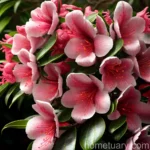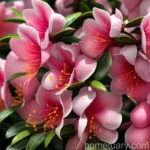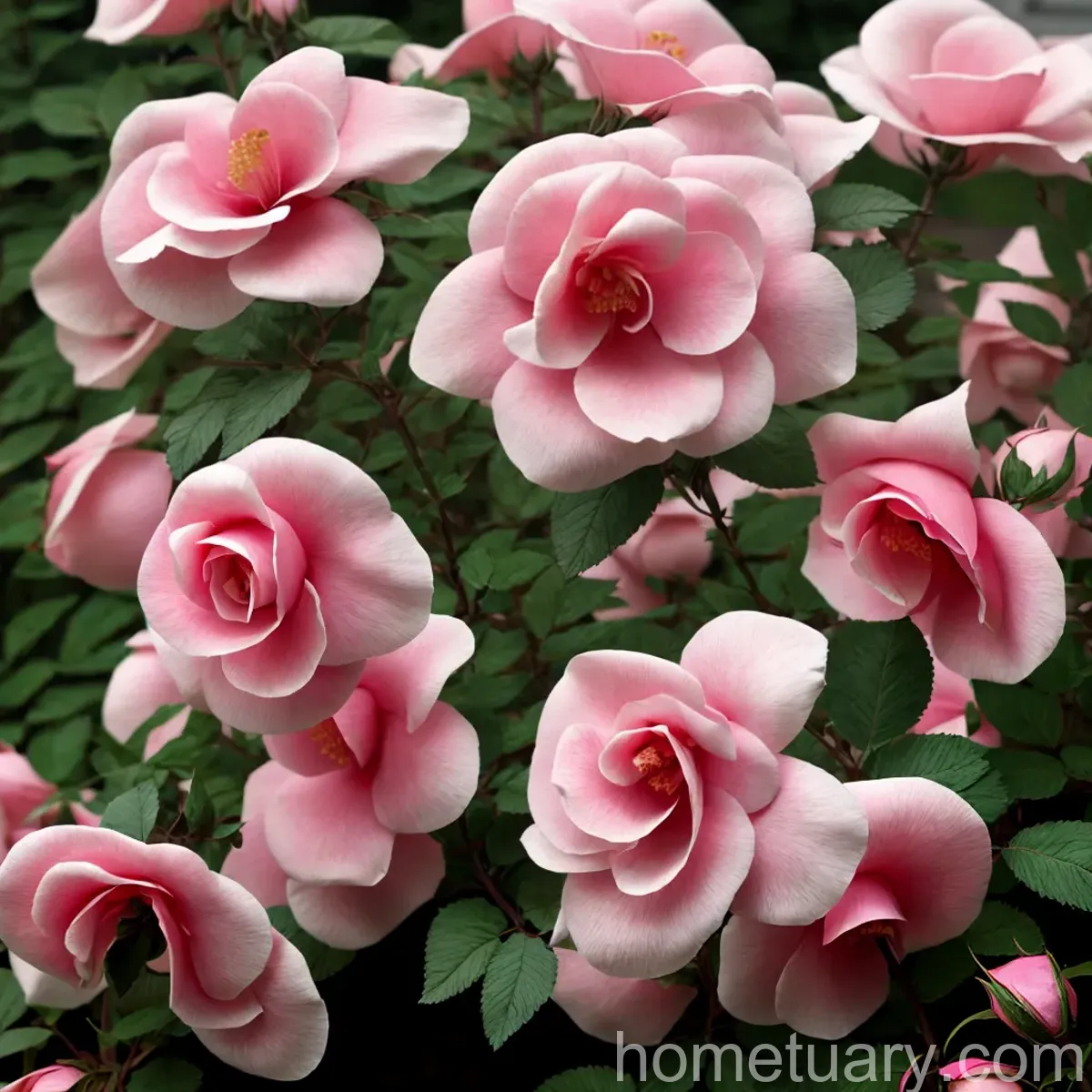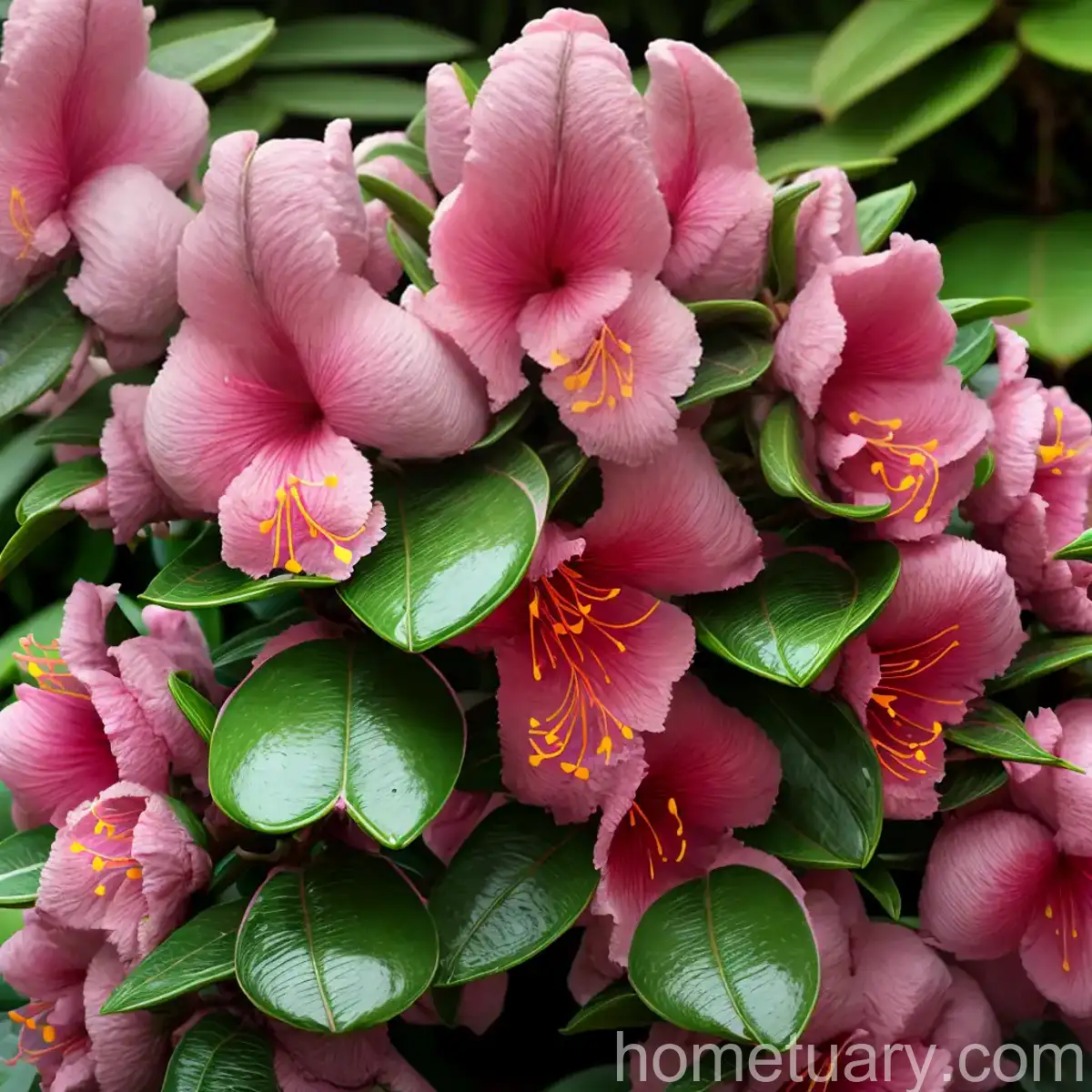The Evergreen Azalea – Rhododendron ‘Martha Hitchcock’
As a plant scientist with a passion for ornamental shrubs, I find the evergreen azalea (Rhododendron ‘Martha Hitchcock’) to be an enchanting and versatile addition to any garden or landscape. In this comprehensive guide, we will explore the cultural requirements, uses, care tips, and common diseases and pests associated with this beautiful plant.
What is an Evergreen Azalea – Rhododendron ‘Martha Hitchcock’?
The Rhododendron ‘Martha Hitchcock’ is a stunning evergreen azalea known for its vibrant, showy blooms and lush, glossy foliage. It is a member of the Rhododendron family and belongs to the group of evergreen flowering shrubs. This cultivar is highly valued for its ornamental qualities and is a popular choice for landscaping, borders, and container gardening.
Key Takeaways
Before we delve into the specifics, let’s highlight some key takeaways about the evergreen azalea (Rhododendron ‘Martha Hitchcock’):
- Belongs to the Rhododendron family
- Known for its vibrant, showy blooms
- Lush, glossy evergreen foliage
- Popular choice for landscaping and container gardening
- Versatile ornamental shrub
Now, let’s explore the cultural requirements and care tips for this captivating plant.
Culture
Uses
The evergreen azalea (Rhododendron ‘Martha Hitchcock’) offers a myriad of uses in garden and landscape settings. Some of its common uses include:
- Landscaping: The vibrant blooms and evergreen foliage make it a desirable choice for landscaping, adding color and texture to garden beds, borders, and naturalized areas.
- Container Gardening: Its compact growth habit and dazzling flowers make it a perfect choice for container gardening, adding a pop of color to patios, porches, and balconies.
- Borders and Edging: The low-growing, spreading nature of this azalea makes it an excellent choice for borders and edging, defining garden spaces with its lush greenery and blooms.
Water
Proper watering is essential for the health and vitality of the evergreen azalea. Here are some key points to consider regarding its water needs:
- Moist, Well-Drained Soil: The azalea thrives in moist, well-drained soil. It is important to ensure that the soil is consistently moist but not waterlogged, especially during the growing season and hot summer months.
- Mulching: Applying a layer of organic mulch around the base of the plant helps retain soil moisture and regulate temperature, promoting optimal growing conditions.
- Avoid Overhead Watering: To prevent leaf spot diseases, it is advisable to water the plants at the base and avoid wetting the foliage, especially in the evening.
Sunlight
The evergreen azalea (Rhododendron ‘Martha Hitchcock’) has specific sunlight requirements for optimal growth and blooming:
- Partial Shade to Dappled Sunlight: These azaleas thrive in locations with partial shade to dappled sunlight. They benefit from protection against harsh midday sun, especially in warmer climates.
- Morning Sun and Afternoon Shade: An ideal location for planting the evergreen azalea is where it receives morning sun and afternoon shade, providing the right balance of light and shade.
Fertilizer
Proper fertilization is crucial for promoting healthy growth and abundant blooms in the evergreen azalea. Consider the following points when fertilizing this ornamental shrub:
- Slow-Release Fertilizer: Use a balanced, slow-release fertilizer formulated for acid-loving plants in early spring, before the new growth starts, to provide essential nutrients for the growing season.
- Avoid High Nitrogen Fertilizers: Azaleas are sensitive to high levels of nitrogen, so it’s important to use a fertilizer specifically designed for acid-loving plants to prevent nutrient imbalances.
Soil
The right soil conditions are essential for the evergreen azalea to thrive. Here are some soil considerations for this ornamental shrub:
- Acidic, Well-Drained Soil: Azaleas prefer acidic soil with a pH range of 4.5 to 6.0. Amending the soil with organic matter such as compost, pine bark, or peat moss can help maintain the ideal pH level and improve soil structure.
- Avoid Waterlogged Soil: Ensure that the planting site and the surrounding soil have good drainage to prevent waterlogging, which can lead to root rot and other moisture-related issues.
Pruning
Proper pruning helps maintain the shape, size, and overall health of the evergreen azalea. Here are some essential pruning tips for this ornamental shrub:
- Prune After Flowering: It is best to prune the evergreen azalea immediately after flowering, typically in late spring to early summer. This timing allows the next season’s flower buds to form on the new growth.
- Deadheading: Removing faded flowers not only improves the plant’s appearance but also encourages the development of new buds for the following year, promoting a continuous cycle of blooms.
Propagation
The evergreen azalea (Rhododendron ‘Martha Hitchcock’) can be propagated through several methods, including:
- Softwood Cuttings: Propagating from softwood cuttings taken in early to mid-summer can be a successful method for creating new plants.
- Air Layering: Air layering is another effective propagation method for azaleas, allowing for the development of roots on a stem while still attached to the parent plant.
- Layering: Ground layering, where a low-hanging branch is pinned to the ground and covered with soil to encourage root formation, can also be used for propagation.
Container Popularity
The evergreen azalea (Rhododendron ‘Martha Hitchcock’) is a popular choice for container gardening due to its compact size, attractive blooms, and evergreen foliage. When grown in containers, it adds a vibrant touch to outdoor spaces such as patios, decks, and small gardens.
Container Common Diseases
While container-grown azaleas are generally low-maintenance, they may still be susceptible to certain diseases, such as:
- Root Rot: Overwatering or poorly-draining soil in containers can lead to root rot, causing the plant to wilt and decline.
- Powdery Mildew: High humidity and poor air circulation can contribute to powdery mildew on the foliage, leading to a white powdery coating and potential leaf damage.
Disease Diagnosis
Diagnosing diseases in container-grown azaleas involves careful inspection of the plant and its growing conditions. Common signs of disease may include wilting, yellowing or spotted leaves, abnormal growth, and unusual discoloration on the foliage or stems.
Common Pests
The evergreen azalea may be vulnerable to pests that can impact its health and appearance. Some common pests to watch out for include:
- Azalea Lace Bug: These tiny insects can cause stippling and discoloration on the foliage, affecting the plant’s overall vigor.
- Spider Mites: Spider mites can thrive in dry conditions, leading to webbing and stippling on the leaves of azaleas.
Botanist’s Tips
For optimal care and maintenance of the evergreen azalea (Rhododendron ‘Martha Hitchcock’), consider the following tips from a botanist:
- Regular Monitoring: Keep a close eye on the plant for any signs of stress, disease, or pest infestations, and address any issues promptly.
- Appropriate Pruning: Prune the azalea after flowering to maintain its shape and promote healthy growth, while also removing any dead or damaged branches.
Fun Facts
Before we conclude, let’s explore some fascinating fun facts about the evergreen azalea (Rhododendron ‘Martha Hitchcock’):
- The ‘Martha Hitchcock’ cultivar is named after Martha Hitchcock, a renowned American horticulturist and educator known for her contributions to the field of ornamental horticulture.
- Evergreen azaleas are celebrated for their ability to thrive in shaded areas, making them highly versatile and adaptable in various garden settings.
Links to External Resources
For further information and detailed insights on the cultivation and care of the evergreen azalea (Rhododendron ‘Martha Hitchcock’), consider exploring the following external resources:
- American Rhododendron Society
- The Azalea Society of America
- Royal Horticultural Society – Azaleas and Rhododendrons
- University of Georgia – Center for Invasive Species and Ecosystem Health
In conclusion, the evergreen azalea (Rhododendron ‘Martha Hitchcock’) stands as a captivating and versatile ornamental shrub with its vibrant blooms, glossy foliage, and adaptability to various garden and landscape settings. With the right cultural care and maintenance, this beloved plant can thrive and enrich outdoor spaces with its natural beauty. Whether in a garden bed or a decorative container, the ‘Martha Hitchcock’ azalea remains an alluring choice for plant enthusiasts and horticulturists alike.















